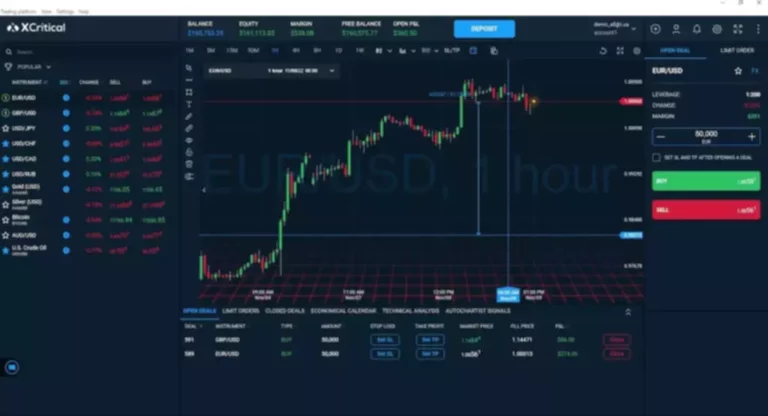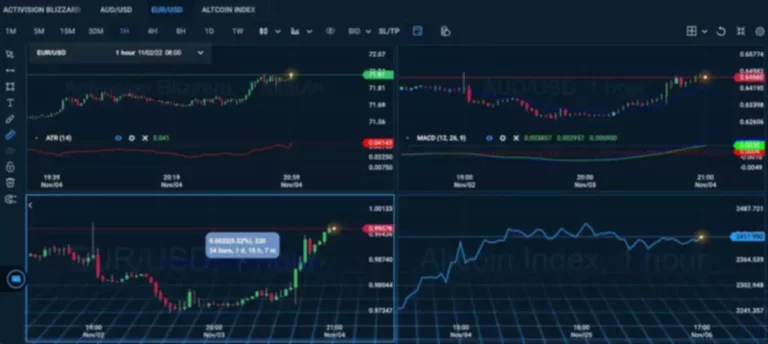Content
It calls for more specialized financial knowledge than price movement data-driven technical analysis. Ultimately, it comes down to whether you’re day trading or swing trading vs long term investing. But in the end, you should rely on both difference between fundamental and technical analysis fundamental and technical analysis – and our software helps make this easier and more convenient than ever. The combination of robust data analytics and real-time updates means you can trade and invest with increased confidence, reducing second-guessing and potential errors. See the system in action by getting a stock analysis free today, or get set up with our stock advisory app and dive right in! Because at this point, it’s time we wrapped up this conversation on technical vs fundamental analysis.
- Technical analysis relies on statistics to help predict how a stock might perform in the future.
- Meanwhile, technical analysis helps traders capitalize on short-term price movements and trends using historical price data and market psychology.
- Buy and sell signals are generated when a shorter-duration moving average crosses a longer-duration one.
- But this does not necessarily mean that this is a good time to invest or start trading as a latecomer.
- Your trading strategy will depend on your financial goals, risk tolerance, and personal preferences.
Fundamental Analysis vs Technical Analysis: Which is Better For Your Trading Strategy?

If they determine that it has breached this point, it could be that the price trend has entered https://www.xcritical.com/ a bullish phase and could rise further. While a fundamental analysis typically focuses on long-term returns, a technical analysis focuses on optimising a short-term trade. Short-term traders will use a technical analysis when they want to optimise the returns on a trade. A technical analysis concerns the historical movements of an asset to determine an expected future price. Proponents of this type of analysis ultimately believe an asset’s chart tells a story.
Core Principles of Technical Analysis
Two primary compasses used by traders globally are fundamental analysis vs technical analysis. Ultimately, the choice between fundamental and technical analysis depends on an individual’s investment goals, risk tolerance, and preferred trading style. By utilizing the tools and techniques from both approaches, investors can gain a comprehensive understanding of the market forex crm and enhance their ability to make successful investment decisions. Different analysis methods can shape and inform various investment strategies. For instance, value investors might rely on fundamental analysis to identify undervalued stocks, using financial metrics and qualitative factors to assess a company’s intrinsic value. Striking a balance between long-term investment strategies and short-term trading signals can be a challenging feat.
Mastering the Money Game: Taming the Procrastination Monster in Investment!
Otherwise, it’s time to see how the best platform for swing trading can simplify your approach to stock analysis and empower you to win more trades with less work. Fundamental analysis delves deep into the intrinsic value of a company, making it invaluable for long-term investors seeking to comprehend the health and potential of a business. But what is the difference between fundamental and technical analysis – and is one necessarily better than the other? You’re about to find out as we take a deep dive into the nuances of the fundamental vs technical analysis debate. In the complex world of trading, understanding the various types of risks involved is paramount to successful decision-making. Fundamental analysis predicts the likely performance of an equity investment by assessing the underlying profitability and outlook of a corporate.

Fundamental vs. Technical Analysis
Investors using fundamental analysis track interest rates, gross domestic product, manufacturing data, and unemployment rates to make informed predictions about stock prices. Time and price interact to determine the pace and duration of market trends, influencing the timing of entry and exit points for traders and investors. These methods show how to combine fundamental and technical analysis to improve your available information before engaging in a trading strategy. While traders might skew more fundamental or technical in their analysis, it’s important to have a grasp of both to avoid blind spots in trading decisions – particularly for those focused on short-term trading. While some investors prefer the use of a single analysis method to evaluate long-term investments, a combination of fundamental, technical, and quantitative analysis is the most beneficial.
This includes analysing financial statements, industry conditions, and macroeconomic indicators to determine the overall health and potential of a company. The goal is to identify undervalued stocks that have strong growth potential. Combining technical and fundamental analysis can help investors time their market entry and exit points more effectively. While fundamental analysis provides insights into a security’s intrinsic value, technical analysis offers real-time information about price movements and trends. Like archaeologists unearthing ancient treasures, fundamental analysts delve deep into a company’s financial records to uncover its true value. Through rigorous examination of financial statements, industry trends, and management quality, fundamental analysts can identify undervalued securities and make informed long-term investment decisions.
Ultimately, the choice depends on your trading style, investment horizon, and financial objectives. It combines the fundamental analysis’s risk assessment capabilities with the technical analysis’s timing. Technical analysis evaluates financial assets, such as stocks, currencies, or commodities, by reviewing the historical price and volume data. Unlike fundamental analysis, which focuses on the intrinsic value of an asset, technical analysis examines the volume and price of shares over time. Fundamental and technical analysis each offer unique insights into market dynamics, with their own sets of advantages and limitations.
Fundamental analysis is used in finance to evaluate the intrinsic value—the real worth—of a security, sector, or economy. It’s used when scrutinizing income statements, balance sheets, and cash flow statements for a company’s stock. You can start investing with limited funds by opening a brokerage account with low minimum deposit requirements or opting for fractional shares. Fundamental analysis uses stuff like financial ratios and cash flow models to figure out how much a company might be worth. Consequently, you might consider taking a long position, which will help you if the stock price increases. The more precise and accessible that information is, the more empowered you become as an investor.

CFDs are complex instruments and come with a high risk of losing money rapidly due to leverage. You should consider whether you understand how this product works, and whether you can afford to take the high risk of losing your money. Utilizing both technical and fundamental analysis comes in handy when trading and investing.
To find this answer, analysts dive into a company’s financial statements, analyzing metrics like earnings, revenue, liabilities, and assets. EPS in stocks tends to drive the market, and this is often the best gauge of a company’s health. Common technical analysis signals include simple moving averages, support and resistance levels, trendlines, and momentum indicators.
There are many technical indicators that can be used in technical analysis, which can provide a better picture of the market trends and aid in predicting future price action. Technical analysis is a way to attempt to predict future market trends based solely on past price movements. Fundamental analysis attempts the same by evaluating the asset on the basis of background information. Both methods are often used concurrently to analyze securities, commodities, stocks, cryptocurrencies and the like.
Fundamental and technical analyses are the major schools of thought for approaching the markets. As market participants are often subject to FOMO (fear of missing out), the price could very well decline after the initial price upsurge. Therefore, on such occasions, one must be cautious so as not to “buy at the top” (buy an asset when the price is just about to start falling).
A stock trading below the company’s intrinsic value is seen as promising, while the opposite is true for those priced below it. The outcome of the analysis can lead to buying, holding, or selling a security. Fundamental analysis helps people decide if a stock is priced right based on how the company is doing financially. It uses stuff like financial statements, which are reports of a company’s money, and economic indicators, which show how the economy is doing. Technical analysis checks out how prices of stocks or other things have moved in the past to guess how they might move in the future.
Technical analysis requires an understanding of the interplay of the current price and market forces. The market forces considered include economic data releases, breaking news, and the market forces of demand and supply. Next, we’ll delve into how different analysis methods can influence and inform diverse investment strategies and adaptability to shifting market conditions. Merging these two methodologies allows investors to devise a balanced strategy that takes into account both their long-term and short-term investment aspects. It is worth noting that the main function of fundamental analysis is to make an excellent investment, whereas technical analysis is often used for trading purposes. Understanding these price movements can help investors respond to future interest rate announcements.
